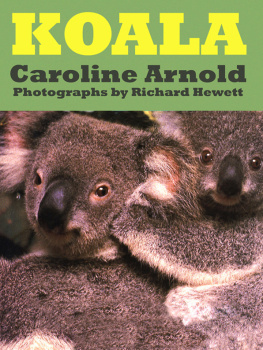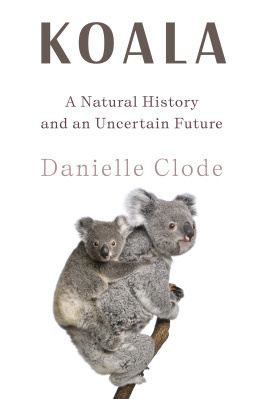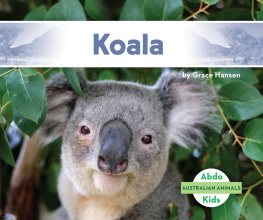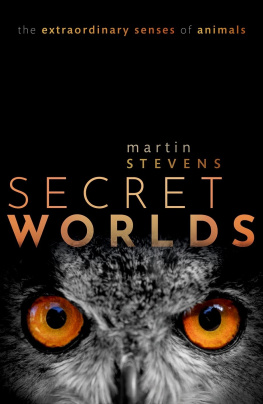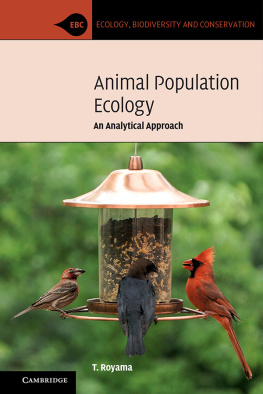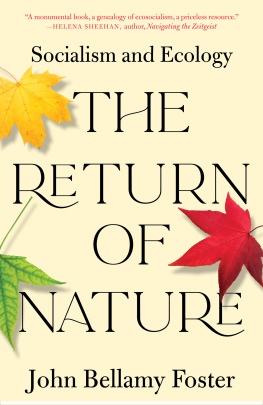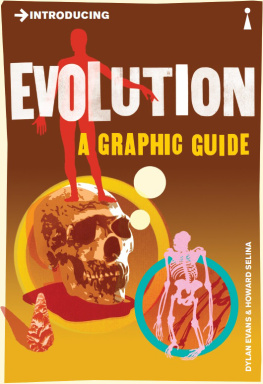Dr Stephen Jackson has worked in the wildlife industry for the past two decades, as a field biologist, zoo keeper, wildlife park curator and government zoo regulator, among other roles. He has a PhD in zoology and has worked extensively with koalas in captivity, giving him a unique insight into their biology and behaviour. Dr Jackson is the author of Biology of AustralianPossums and Gliders and Australian Mammals: Biology andCaptive Management, for which he received the Whitley Medal, and has published over 25 papers in various areas of Australian mammalogy. This is his third book.
KOALA

ORIGINS of an ICON
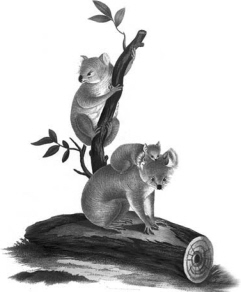
STEPHEN JACKSON

This edition published in 2010
First published in 2007
Copyright Stephen Jackson 2007
All rights reserved. No part of this book may be reproduced or transmitted in any form or by any means, electronic or mechanical, including photocopying, recording or by any information storage and retrieval system, without prior permission in writing from the publisher. The Australian Copyright Act 1968 (the Act) allows a maximum of one chapter or 10 per cent of this book, whichever is the greater, to be photocopied by any educational institution for its educational purposes provided that the educational institution (or body that administers it) has given a remuneration notice to Copyright Agency Limited (CAL) under the Act.
Allen & Unwin
83 Alexander Street
Crows Nest NSW 2065
Australia
Phone: (61 2) 8425 0100
Fax: (61 2) 9906 2218
Email: info@allenandunwin.com
Web: www.allenandunwin.com
Cataloguing-in-Publication details are available
from the National Library of Australia
www.librariesaustralia.nla.gov.au
ISBN 978 1 74237 323 2
Set in 11.5/17 pt Adobe Garamond Pro by Midland Typesetters, Australia
Printed in Australia by Ligare Pty Ltd, Sydney
10 9 8 7 6 5 4 3 2 1
CONTENTS
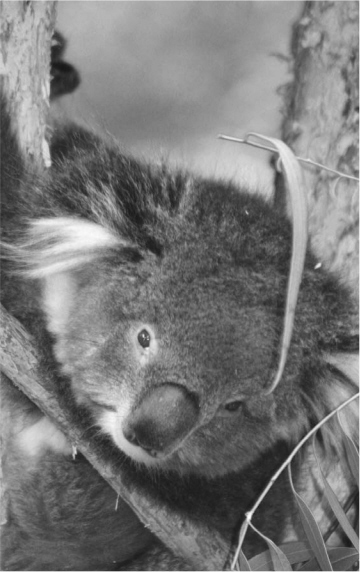
The koala: one of Australias great icons
Numerous people have provided valuable assistance in the writing of this book. My sincere thanks go to Achim Winkler from Zoo Duisburg for providing details of European zoos that either have held, or currently hold, koalas. Chris Hamlin from San Diego Zoo also provided excellent information on institutions in the United States that hold koalas, and on the fodder providers to zoos in both the United States and Europe. Regina Pfistermller from Zoo Vienna and Sandy Masuo from Los Angeles Zoo were generous in providing details on the koalas in their zoos.
Thanks also to Paul Andrew from Taronga Zoo for his help on the history of Australian koalas travelling to Japan. Michial Farrow from the Adelaide City Council Archives provided the information on the Koala Farm in Adelaide. Thanks to Helen Pantenburg from Taronga Zoo for providing photos of koalas at Taronga Zoo. Greg Gordon provided an excellent photo, some interesting insights into the politics behind the export of koalas, additional references and provided very useful information to various queries that I made. Thanks to Cindy Steensby and Gerry Maynes from the Department of Environment and Heritage in Canberra for their advice on the history of legislation regarding the export of koalas. Ben Moore and William Foley offered much useful information on dietary ecology.
A sincere thank you to Vanessa Di Giglio, for providing both a valuable reference and general encouragement. Many thanks also to Alex Baynes who provided excellent details on the koala fossils from Western Australia. Various referees have also added considerably to content and quality of each of the chapters. Therefore significant thanks are due to Mike Archer, Karen Black, Frank Carrick, William Foley, Greg Gordon, Kath Handasyde, Julien Louys, Dan Lunney, William Meikle, Alistair Melzer, Peter Menkhorst, Hugh Possingham, Barry Traill and Achim Winkler. Sincere thanks also to the publisher and staff at Allen & Unwin, including Ian Bowring, Catherine Taylor and Emma Cotter for their help with this project.
Finally I would like to say a wonderful thanks to Kerstin, Olivia and James for helping me enormously and keeping me entertained.
If you were to take a straw poll of the animal most closely associated with Australia, its a fair bet that the koala would come out marginally in front of the kangaroo. Instantly recognisable by its large fluffy ears, spoon-shaped nose and bright button eyes, the koala is an undeniable drawcard at zoos and fauna parks, an advertising icon and the inspiration behind millions of soft toys, games and gimmicks. Today we see this species as an icon, a valuable attraction at Australian zoos and fauna parks and a species sought after by zoos around the world. But has the koala always been so popular? What makes the koala so special? Indeed, if it is so special, why is it considered by many to be vulnerable to extinction in much of its traditional habitat?
Australias Aborigines acknowledge the koalas significance to their day-to-day lives in a wealth of Dreamtime stories. These legends tell how the koala lost his tail and why he has so little need of water. Many of the stories of the early European settlers portray the koala as being sly, or secretive, which perhaps explains why the settlers did not discover it until almost ten years after the first fleet arrived. When Europeans did come across this strange native creature, they credited it with many bizarre habits, in an endeavour to relate it to more conventional arboreal mammals that they were familiar with. Strange as some of these accounts may seem to modern eyes, many of these early observations were insightful and provided the foundation for our current knowledge.
Over the years, the koala has become one of the most intensively-studied of all Australian animals. An army of researchers such as Steve Brown, Frank Carrick, Robert Close, William Foley, Greg Gordon, Kath Handasyde, Dan Lunney, Roger Martin, Alistair Melzer, Peter Menkhorst and Hugh Possingham, to name a few, have devoted themselves to the species and revealing its secrets. Is the koala actually as slothful as it is portrayed? How does it survive, thrive even, on such indigestible fare as Eucalyptus leaves, laden as they are with enough toxic phenols to kill most other animals? Will koalas cohabit in groups or do they always prefer to be by themselves? Thanks to the research that has already been done, the answers to these and many other questions will be found in the following chapters. This is not to say however, that we now know all there is to know about the koala. There is still much to be learned about our koala and it will, no doubt, be the focus of much scientific interest for many years to come.
The koalas appeal stretches far beyond the scientific community. Its undisputed popularity is also reflected in its starring role in advertising campaigns, songs, poems, cartoons, books and, now, video games. The koalas popularity has helped it to play an important role as an ambassador for Australia and as a great attraction for the Australian tourism industry.
The koalas natural distribution along the east coast of Australia has been widened by its introduction on to more than twenty islands off the coasts of Queensland, New South Wales, Victoria, Tasmania and South Australia. Many of these translocations occurred as a result of genuine concern about the impact of hunting on existing koala populations but, as we will see, the koalas introduction to island habitats has often been too successful. Protected from its natural predators, koala numbers have risen unchecked and there is much ongoing and often acrimonious debate on how to manage these populations.
Next page
